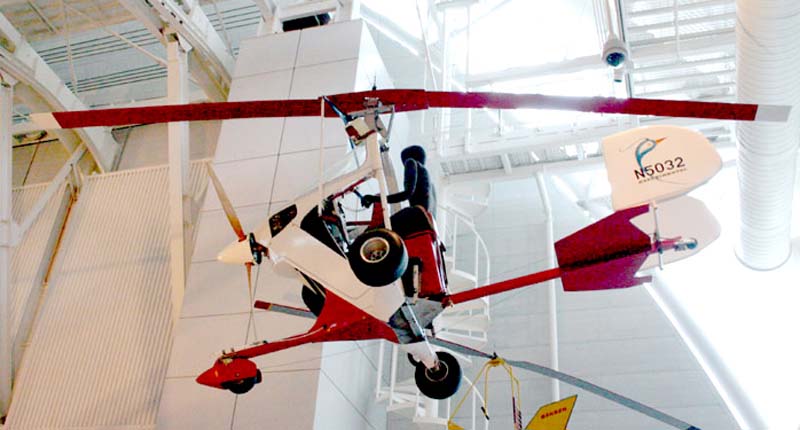| Gyro 2000 | |
 |
|
|
Ikenga 530Z Photo: Robert Deering 10/23/2006 Smithsonian Nationa Air and Space Museum Dulles International Airport (IAD) Chantilly, Virginia |
|
|
|
|
The Ikenga 530Z's simple
construction and capability to takeoff and land in short
distances while operating from unprepared surfaces made
it ideally suited for use in remote areas. Its tractor
engine made it more stable than the pusher configuration
of most modern gyroplanes. The pilot rode
motorcycle-style, with the heels of the pilot's feet
controlling the rudder pedals. "Ikenga" refers to the
ceremonial mask that embodies humanity's creative life
force in the Ibo mythology of Eastern Nigeria. Physical Description: Single-seat autogiro with 2-blade rotor, tractor engine driving three-blade, wooden propeller.
Source:
Smithsonian Air & Space Museum |
